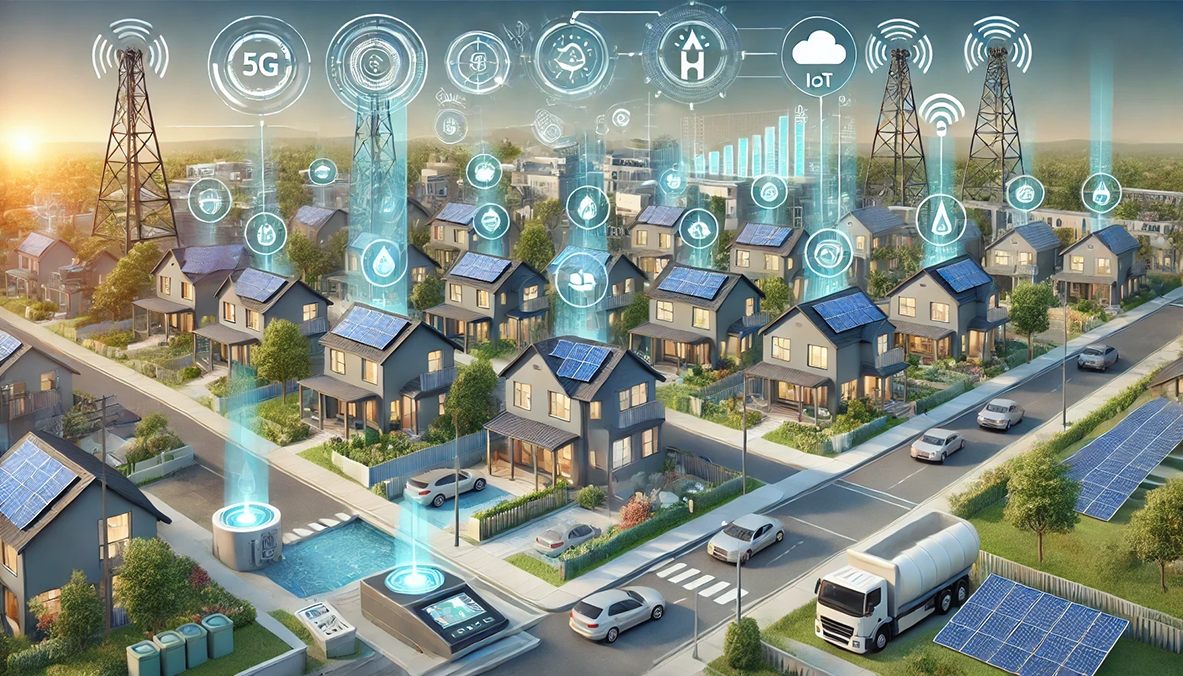Transforming Residential Utility Management with Smart Meters and IoT
The future of residential submetering is set to be transformed by emerging trends and innovations in smart meter technology and IoT integration. These advancements promise to enhance utility management, improve energy efficiency, and provide valuable insights for both property managers and residents. Here’s a look at how these trends are shaping the future of residential submetering.
Smart Meters and IoT Integration
Real-Time Monitoring and Data Analytics
IoT-based smart meters offer real-time monitoring capabilities that allow for precise tracking of utility usage. These meters can provide detailed insights into energy consumption patterns, enabling homeowners to make informed decisions to reduce wastage and improve efficiency. Advanced data analytics tools can process this information to identify trends and suggest optimization strategies, making energy management more proactive and efficient.
Remote Management and Control
One of the significant benefits of IoT-enabled smart meters is the ability to manage and control them remotely. This functionality is especially useful for property managers who need to monitor multiple units simultaneously. Remote access allows for real-time adjustments, fault detection, and maintenance scheduling without the need for physical inspections, thus saving time and reducing operational costs.
Enhanced Connectivity and Standards
The evolution of connectivity standards, including the adoption of 4G, 5G, NB-IoT, LTE Cat M1, and LoRaWAN, is crucial for the effective deployment of smart meters. These technologies offer robust, reliable, and long-range communication capabilities, ensuring that smart meters can operate efficiently in various environments. Enhanced connectivity also facilitates better integration with other smart home devices, contributing to a more cohesive and intelligent residential infrastructure.
LoRaWAN, in particular, provides a low-power, wide-area networking solution ideal for smart metering in residential settings. It enables automatic metering data transmission several times a day through an Automatic Metering Infrastructure (AMI), allowing utilities to bill based on actual measurements. For homeowners, LoRaWAN supports advanced anomaly detection, such as leakage alarms and fault detection, which helps in timely maintenance and reduces water and energy waste. The technology also empowers residents with real-time consumption data, enabling them to make informed decisions about their energy and water usage, leading to more efficient and cost-effective household management.
Predictive Maintenance and Energy Optimization
Smart meters equipped with AI and machine learning capabilities can predict maintenance needs and optimize energy usage. By analyzing historical data and usage patterns, these meters can forecast potential issues before they occur and suggest maintenance actions to prevent downtime. This predictive approach not only enhances the reliability of utility services but also extends the lifespan of the metering equipment.
For example, predictive maintenance can help identify when a household appliance, such as a water heater, is operating inefficiently. This early detection can prompt timely repairs or replacements, thus preventing more significant issues and reducing energy costs.
Learn how these advancements are also transforming commercial utility management in our post, ‘Revolutionizing Commercial Utility Management with Smart Meters and IoT.’
Applications in Residential Settings
High Water Usage Scenarios
In residential environments, smart meters can help identify high water usage scenarios, such as leaks or inefficient appliances, by providing detailed usage reports. This information can be used to address issues promptly, reducing water waste and lowering utility bills.
Energy Management in Smart Homes
Smart meters play a critical role in smart homes by enabling seamless integration with other IoT devices. They can interact with HVAC systems, lighting, and appliances to optimize energy consumption based on real-time data. For instance, a smart meter can signal the HVAC system to reduce heating or cooling when the home is unoccupied, thereby conserving energy.
Conclusion
The integration of IoT technology and smart meters marks a significant advancement in residential submetering, providing real-time insights, remote management, and predictive maintenance for more efficient utility management and energy conservation. As these technologies evolve, they will play an increasingly crucial role in shaping the future of residential utility management. For more information on how smart meters and IoT integration can benefit your residential property, contact us or explore our utility management solutions. Stay updated on the latest trends by subscribing to our newsletter and joining the conversation on LinkedIn. Leveraging these emerging trends ensures your residential properties are equipped to meet future demands.
Engage with Us
Have Questions? Contact us for expert advice.
Join the Conversation: Follow us on LinkedIn.
Thank you for visiting our site. We look forward to helping you optimize your utility management!
